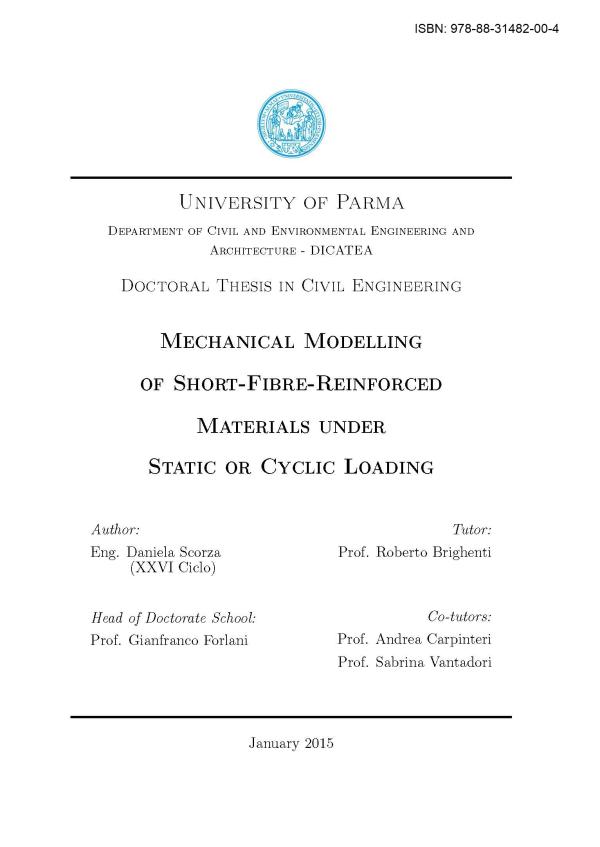Mechanical Modelling of Short-Fibre-Reinforced Materials under Static or Cyclic Loading
Keywords:
Static loading, Cyclic loading, Short fiber reinforced materialsSynopsis
Fibre-Reinforced Composite (FRC) materials typically consist of two or more constituents combined at a macroscopic level. Due to their high mechanical
properties (such as good tensile strength, fracture resistance, durability, corrosion
resistance, enhanced wear and fatigue strength), composites are commonly used in
advanced engineering applications. The mechanical properties of such multiphase
materials depend on those of their constituents, i.e. the bulk material (matrix)
and the reinforcing phase (such as fibres), as well as on their reciprocal interface
bonding. The strength and durability design of composite structural elements must
consider the typical damage phenomena occurring in such materials under in-service
loading. Such degrading effects, usually responsible for a significant decrease of
the structural mechanical performances, can be mainly related to the fibre-matrix
delamination (also identified as debonding), fibre breaking, fibre buckling, matrix
plastic deformation or cracking. The proper evaluation of the safety factor of
composite materials during the service life and also at their limit state, is a crucial
task in the design and durability assessment of structural components made by
such materials.
The present Ph.D. Thesis deals with the development of a micro-mechanicalbased approach for the assessment of the mechanical behaviour of short fibre
reinforced composites under static and cyclic loading, by taking into account
the principal damage failure modes. A homogenisation approach, based on an
energetic formulation, has been generalised in order to take into account the spatial
arrangement and distribution of the fibre reinforcing phase. Fibres effectiveness is
considered by means of a proper parameter, the sliding function s, that quantifies
the stress transfer capability of the fibre-matrix interface bond. Such a parameter
has been determined through the fracture mechanics based approach proposed in
this Ph.D. Thesis, in alternative to the classical "Shear Lag" model. A correlation
between the present model and the shear lag one has been proposed in order to
allow the quantification of the static critical interface parameters (such as fracture
toughness and fracture energy), necessary to identified the condition of incipient
detachment propagation. The progressive debonding due to the action of cyclic
loads is quantified through a fatigue power law.
In order to consider all the micro-mechanical phenomena involved in static
and fatigue problems, the mechanical behaviour of the single constituents of the
composite are also analysed. The matrix is assumed to be characterised by a
linear elastic, elastic-plastic or brittle mechanical behaviour in case of static loads,
whereas an approach based on the experimental Wöhler diagrams (S-N curves)
is adopted to simulate fatigue effects. The fibre-reinforcing phase is assumed to
present a linear elastic behaviour until reaching a suitable condition of failure at
which the fibre breaks into two parts. Fibre-fibre reciprocal interaction is also
considered, whereas the effect of the cycle loading on the fibre material has been
neglected.
Finally, the formulation proposed has been implemented in a non-linear 2-D
FE code and used for the simulation of simple structural elements under static
and cyclic loads. Some of the obtained results have been reported, discussed and
compared with literature available data.





